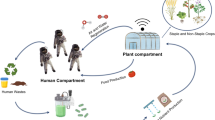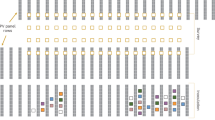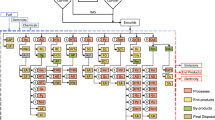Abstract
Water scarcity in hot deserts, which cover about one-fifth of the Earth’s land area, along with rapid expansion of hot deserts into arable lands is one of the key global environmental problems. This paper proposes and substantiates an interdisciplinary approach to sustainable settlements in hot deserts using the accomplishments in the design of closed bioregenerative life support systems (CBLSS) for beyond-Earth (Lunar, Martian) settlements. Extensive space technology experience in the design of CBLSSes, which simultaneously produce food, water, nutrients, and fertilizers, process wastes, and revitalize air, has been analyzed and systematized with application to hot deserts, which represent extreme habitats with high input of solar energy, poor organic life, and nutrient/mineral-rich soils. A general flow diagram and design principles for hot-desert bioregenerative life support systems (BLSS), which may be considered as solar-powered "bioreactors" with accelerated cycles of carbon and nutrients, are formulated. Research and design guidelines for BLSS solar energy utilization, accelerated food production, water production and recycling, and wastes processing are suggested. Environmental and socioeconomic benefits of building hot-desert BLSSes are discussed.
Similar content being viewed by others
Article PDF
Author information
Authors and Affiliations
Corresponding author
Rights and permissions
About this article
Cite this article
Polyakov, Y., Musaev, I. & Polyakov, S. Application of space technology to the design of sustainable settlements in hot deserts: Bioregenerative life support systems. Nat Prec (2009). https://doi.org/10.1038/npre.2009.3926.1
Received:
Accepted:
Published:
DOI: https://doi.org/10.1038/npre.2009.3926.1



